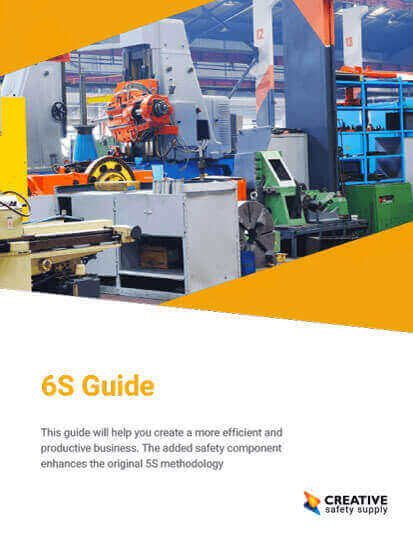
In the dynamic landscape of modern workplaces, safety is a paramount concern. Businesses are constantly seeking methodologies that not only enhance efficiency but also prioritize the well-being of their employees. 6S methodology, an advanced extension of the 5S system, emerges as a powerful tool in achieving both objectives. In this article, we'll explore how the implementation of 6S can significantly enhance workplace safety and lead to a reduction in incidents.
The Intersection of 6S and Workplace Safety
At its core, 6S is a structured approach to workplace organization and process improvement, incorporating an added emphasis on Safety. Let's delve into how each component contributes to a safer work environment:
- Sort (Seiri): The first step involves decluttering and removing unnecessary items from the workspace. By reducing excess, potential hazards are minimized, creating a safer environment for employees.
- Set in Order (Seiton): This step focuses on arranging essential tools, equipment, and materials in an organized manner. A well-organized workspace minimizes the risk of accidents and injuries.
- Shine (Seiso): Regular cleaning and maintenance are crucial for a safe workplace. A clean environment reduces slip and trip hazards, as well as ensures that equipment is in good working condition.
- Standardize (Seiketsu): Standardization involves establishing clear guidelines and procedures for maintaining the organized and clean state achieved through Sort, Set in Order, and Shine. This consistency in practices helps prevent accidents.
- Sustain (Shitsuke): Sustaining the improvements requires ongoing commitment and discipline. This involves continuous monitoring and reinforcement of safety practices among employees.
- Safety: Safety is integrated into every aspect of the 6S process. This includes identifying and mitigating potential hazards, providing proper training, and ensuring the use of appropriate personal protective equipment.
Reducing Incidents Through 6S
Consider a manufacturing facility that has implemented 6S methodology. Workstations are organized, with tools and materials sorted and labeled for easy access. Regular cleaning routines and maintenance checks ensure a tidy and hazard-free environment. Employees are actively engaged in safety practices and report any potential hazards promptly. As a result, incidents such as slips, trips, and falls are significantly reduced, creating a safer workplace for all.
Benefits of 6S for Workplace Safety
- Reduced Incidents: By systematically identifying and addressing potential hazards, 6S leads to a notable reduction in workplace incidents.
- Improved Safety Awareness: 6S fosters a culture of safety awareness among employees, empowering them to take an active role in maintaining a safe work environment.
- Enhanced Employee Morale: A safe workplace contributes to higher employee morale and job satisfaction, as employees feel valued and cared for.
Elevating Safety Through 6S
Implementing 6S isn't just about optimizing processes; it's about prioritizing the well-being of employees. By integrating safety into the foundational principles of Sort, Set in Order, Shine, Standardize, Sustain, and Safety, businesses create a workplace that not only operates efficiently but also ensures the safety and well-being of their most valuable asset—their employees.
Similar Questions
- What is 6S methodology and how can it revolutionize workplace efficiency?
- Why should you implement 6S in your workplace?
- How does employee engagement affect 6S implementation?
- What Are the Key Steps in Implementing 6S for Lean Manufacturing?
- Is 6S Suitable for Non-Manufacturing Environments?
- How can technology improve the effectiveness of 6S in modern workplaces?
- What are the Rules of 6S Safety?
- What is 6S Safety?
- How Do I Use 6S for Safety?

